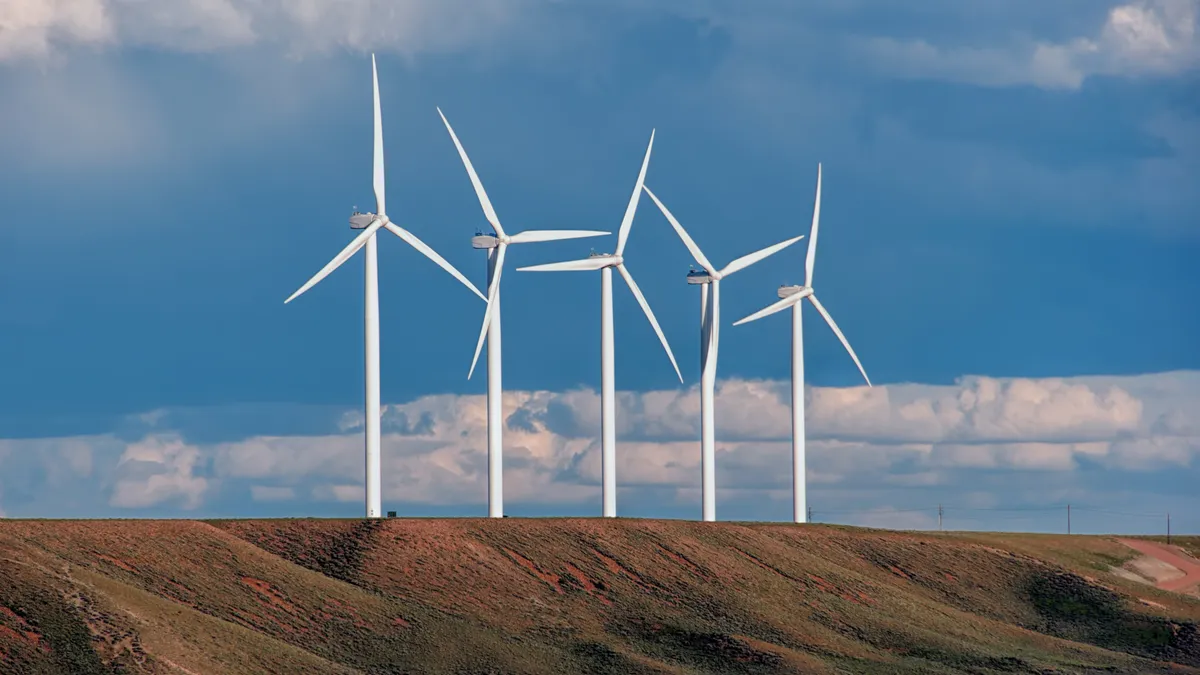Dive Brief:
-
The IRS issued new guidance, including proposed regulations, related to the tax credit transferability and direct pay provisions of the Inflation Reduction Act on Wednesday.
-
The IRS also created a temporary but mandatory online pre-filing registration process for nonprofits seeking direct payment tax credits under the IRA or the CHIPS and Science Act, and for businesses looking to sell newly-transferable tax credits.
-
While the American Council on Renewable Energy heralded the guidance with enthusiasm, the Large Public Power Council said the specific concerns of public power entities remain unaddressed.
Dive Insight:
The latest round of IRA guidance from the U.S. Department of the Treasury garnered mixed reactions from industry advocacy groups on Wednesday.
The guidance primarily deals with the creation of a temporary process for registering tax credit eligible renewable energy and manufacturing projects with the IRS prior to filing a tax return — a process the IRS indicates will be mandatory for projects seeking direct tax credit payments or to transfer tax credits to other buyers, at least for now. It also proposes a filing process for direct payments and for both transferring and claiming tax credits as buyers and sellers of tax credits under the IRA’s transferability provisions.
“We fully expect this guidance to unleash a massive infusion of new renewable energy investment,” ACORE President and CEO Gregory Wetstone said in a statement. “Making renewable tax credits broadly transferable helps address current constraints in the nation’s tax equity market, while the new direct pay regime makes it easier for tribes, states and local governments, co-ops and other nonprofit entities to participate in the clean energy transition.”
Historically, nonprofit and publicly-owned entities could not take advantage of many federal renewable energy incentives, because the incentives take the form of tax credits, and these organizations do not pay taxes to take credits against, according to John Di Stasio, president of the Large Public Power Council, a trade group for large public power utilities.
Because the council’s members cannot claim tax credits, they’ve primarily relied on power purchase agreements to secure renewable energy from taxable — and therefore more economical thanks to the credits — for-profit developers. Public utilities would like to own and develop their own renewable energy projects if they could gain access to the same financial incentives, Di Stasio said.
The IRA’s direct pay provisions aim to solve these constraints. According to Wednesday’s guidance, public and nonprofit entities may in the future pre-register a project they would like to build, and subsequently file a tax return claiming the direct pay credit. The IRS would then first apply the credit to any taxes owed by the entity, and then pay the remainder directly to the nonprofit, public or tribal entity.
But there is a catch that remains unaddressed by the IRS guidance, Di Stasio said. According to the IRA, public power entities must comply with the law’s domestic content requirements by 2024 or risk having their credit eligibility reduced by 40%. While for-profit entities lose a 10% bonus credit if they do not meet the domestic content criteria, nonprofts will be hit with steeper penalties under the law.
With the penalties written into the statute, Di Stasio said the LPPC does not expect the IRS would remove the penalty. However, he said the council hoped the IRS would reduce the risk assumed by public utilities seeking direct pay tax credits by allowing nonprofit developers to file for credits closer to the completion of the project. It also hoped the IRS might recognize the potential for extenuating circumstances, such as supply chain constraints, that could impact a project’s ability to meet the domestic content requirements.
The IRS noted concerns about the domestic content penalties for entities seeking direct pay credits in Wednesday’s proposal, and indicated that it plans to issue further details on an exceptions process in future guidance.
The LPPC remains deeply concerned about the lack of clarity for public power utilities, Di Stasio said.
“Right now people are considering, do I build [renewable energy projects] or do I rely on a PPA,” he said. “I don’t think people want to make that type of investment with uncertainty about those projects, and the longer this goes on, the more likely people will default to doing it the way they have always done it in the past.”













